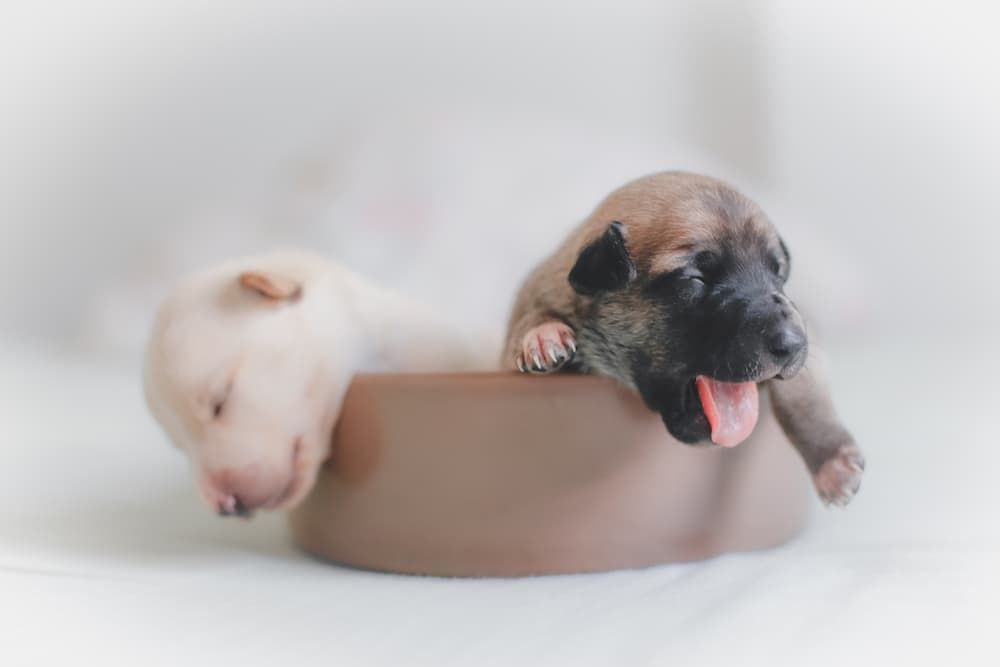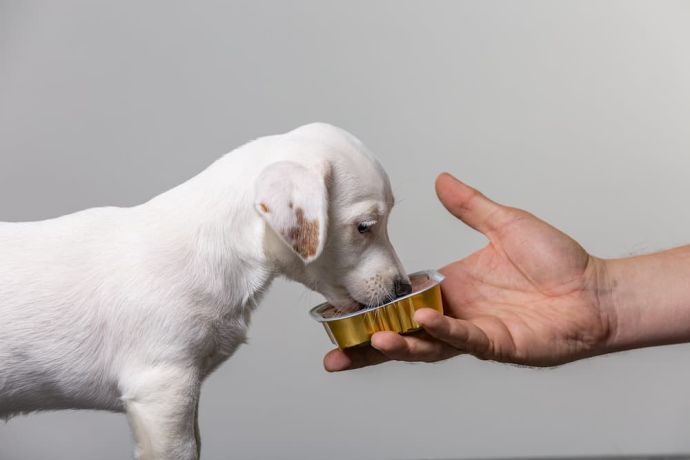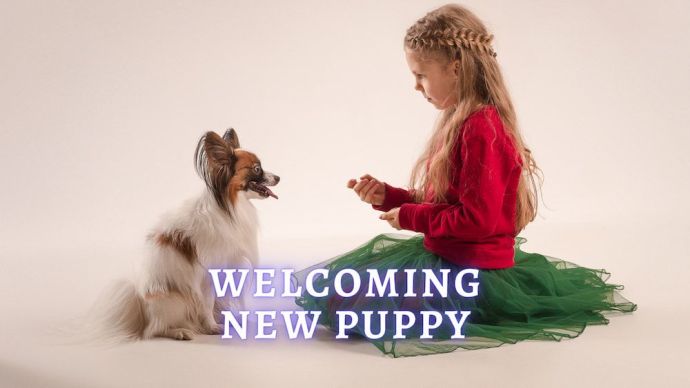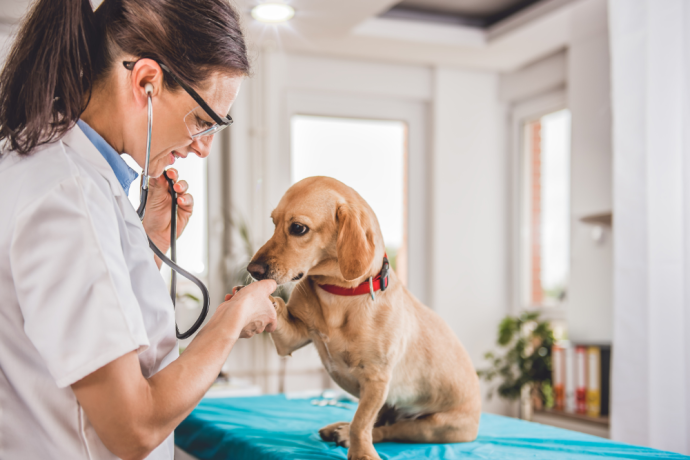How to tell How old a Puppy is?
Written by:
Author: Alina Andreeva
Alina A. is a professional writer, editor, and pet-lover. She has published over 50 articles on how to care for pets properly. Alina has been writing articles for 3 years, so she has considerable experience in this niche. Her natural curiosity helps her to expand her knowledge and learn new pet care life hacks, which will make your life much easier.
View all 79 articlesLearn about our editorial process and veterinary review board.
Reviewed by:
Veterinary review
by Dr. Joanna De Klerk
Dr. Joanna de Klerk is a professional Clinical Veterinarian. Member of the Royal College of Veterinary Surgeons UK and a member of the South African Veterinary Association. Graduated with a Master of Science in Tropical Animal Medicine in 2018. Professional author, she has been writing in scientific journals, and also several book series. Joanna loves to enjoy time with her young daughter and family in her free time.
View all 10 articlesLearn about our veterinary review board
Viewed: 989
Updated on: 01/05/2023
Knowing your fur baby’s age will help you choose a kibble for him, determine what preventive care your four-legged friend might need, and help you understand how to keep him as happy as possible.
This article deals with a dog’s developmental and aging stages so that you can determine your dog’s age. But keep in mind that dogs, like humans, age in different ways. It depends on genetics and lifestyle. You can see very noticeable differences in aging between breeds: Saint Bernards enter old age at six years old, while Chihuahuas, after hitting six are barely middle-aged. [1]
How can I tell How old my Puppy is?
1. Birth to two weeks of age
Recently born pups come into the world without teeth and with closed eyes. Using these traits, you can quickly identify if a dog is under two weeks old. Fluff balls of this age spend most of their time sleeping and suckling their mother’s milk.
2. Two to five weeks old
About two to three weeks after birth, puppies open their eyes, but their vision remains weak. They still have no teeth. Dogs of this age become more involved in their surroundings and begin to explore their environment.
READ MORE: When to Wean Puppies
3. Five to eight weeks old
Milk teeth erupt at three to four weeks of life: The incisors and canine teeth erupt first, followed by the premolars. Puppies do not get baby molars; they only come through when their adult teeth erupt. Puppies will have a complete set of twenty-eight milk teeth by six to eight weeks – small, rounded, and sharp. These teeth, white or cream in color, are not as close together as the permanent teeth. When a fluff ball is eight weeks old, he is playful and curious but will also spend plenty of time sleeping.
4. Eight to sixteen weeks
The milk teeth are still there, but the distance between them will increase as a puppy grows. They will also seem disproportionately small as they remain the same size as the jaw and face grow. This is a period of high activity, growth, and learning for a puppy.
5. Sixteen weeks to eight months
After sixteen weeks, the teeth’ change begins: the milk teeth fall out, and permanent teeth appear in their place. This process starts at the front of the mouth with small teeth called incisors and then moves back, usually symmetrically. The puppy’s mouth may bleed a little due to the loss of milk teeth, but you will probably not notice any symptoms. The deciduous teeth usually disappear by five months, and the permanent teeth typically erupt entirely by eight to twelve months of age.
6. Eight months to twenty-four months
Most canines reach their full height between eight and twelve months of age (although some large breeds continue to grow up to two years). They are not puppies but not adult dogs, either. At this age, dogs go through puberty. And, like human teenagers, they tend to be clumsy and highly active. At this age, plaque can start forming, a buildup of bacteria, saliva, and food material. This is why cleaning your dog’s teeth from a young age is essential to prevent plaque.
7. Two to three years old
Most dogs develop physically by two years, and by the age of three, the tops of some teeth are slightly erased. Without proper care, tartar (a progression of plaque) and even gingivitis will be present in dogs. However, this can be prevented with a good diet and regular tooth brushing.
8. Three to seven years old
Some signs of aging will appear during this period. If a dog’s teeth are not brushed, he tends to suffer from progressive dental disease. Gray hair may appear on the face, and activity levels might drop.
9. Seven years and beyond
Aging depends on a combination of genetics and external factors, so it is different for every individual dog. In the period from seven to ten years, hearing and vision deteriorate, teeth may fall out if they don’t receive attention and the risk of cataracts increases. The coat might become thinner, drier, and more brittle, increasing the number of gray hairs around the muzzle. Your dog might sleep more often, and if his activity level decreases due to mobility issues, so will his muscle tone. At this age, dogs require special care and nutrition.
To prolong an active life, regularly examine your dog and do not ignore the vet’s recommendations. [2] [3] [4]
READ MORE: Puppy Pad Training
What is the perfect Age to get a Puppy?
The ideal age to get a puppy is when he turns fifty-sixty days old. He is strong enough and ready to move to a new house. In most cases, the age from two to three months is the most optimal.
An exception may be situations when the owner, for some reason, cannot take such a young puppy, or there are small children in the house. In this case, it is better to get a puppy later – at four to five months. While puppies of any age are fragile, they are a bit more robust for small children who might accidentally be a bit rough at four to five months. At this age, puppies learn very quickly to get out of the way.
For older people, purchasing a puppy at three-four months is also a good option. The pros are that you can walk with an already vaccinated puppy. He is accustomed to a certain diet and feeding regimen. A fluff ball knows some commands and learns new things easily.
Therefore, before agreeing with the breeder about the day when you are going to come for your small four-legged friend, take into account your regime or circumstances, the interests and capabilities of your family, and your age. A good breeder will always put himself in your place and be able to keep the puppy until the required date within reason. [5]
READ MORE: Bringing Puppy Home
How old is a Puppy not a Puppy?
Your pup will not reach maturity right away. Like humans, dogs progress from infant to adult in stages, although this transition occurs much faster in dogs. Here’s what to look for as your puppy gets older:
- Sexual maturity: The majority of pups become sexually mature between six and twelve months of age. At this point, your dog’s genitals are fully developed, making him fertile. At this stage you can neuter or spay your dog to avoid unwanted behavior or pregnancies; however first discuss it with your veterinarian as some large breeds of dog should only be neutered or spayed when they are fully grown.
- Physical maturity: Physically, dogs are fully mature by one-year-old, although giant breeds can continue to grow up to two years old. When your dog reaches physical maturity, he may still behave like a puppy, but his physical needs, including the number of calories required and the amount of exercise needed to stay healthy, become the needs of a grown-up dog.
- Emotional maturity: You will know that your canine friend has reached emotional maturity when he stops acting like a puppy. Typically, emotionally mature dogs listen and obey better, and have calmer and more balanced behavior. This stage’s exact timing varies, but most dogs reach emotional maturity by the second year of life. [6] [7]
The Bottom Line
Determining the age of a puppy is not an easy task. There are some common physical and behavioral traits that can help estimate his age. With close and careful observation, you should be able to recognize even the smallest signs.
Suppose you are still unable to correctly tell your puppy’s age or are unsure of your conclusions. In that case, you can always seek professional help. This can be your veterinarian, an experienced dog handler, or anyone with extensive experience in caring for dogs and knowledge about their behavior.
Article Sources:
- “Puppy Age Calculator .” Pedigree, pedigree.com.au/puppies/puppy-age-calculator.
- Blake, Mychelle. “How Old Is My Dog?” LoveToKnow, dogs.lovetoknow.com/about-dogs/how-old-is-my-dog.
- Paretts, Susan. “When Does My Puppy Finish Growing? How Long Do Puppies Grow?” American Kennel Club, 29 June 2020, akc.org/expert-advice/health/when-does-my-puppy-finish-growing.
- “When Is a Puppy Considered a Dog.” Royal Canin, 23 July 2020, royalcanin.com/us/dogs/puppy/when-does-my-puppy-become-an-adult-dog.
- Lunchick, Paisley, and RVT KPA-CTP. “What Is the Best Age to Send Puppies to Their New Homes?” American Kennel Club, 10 Dec. 2019,www.akc.org/expert-advice/dog-breeding/best-age-send-puppies-to-new-homes.
- Coren, Stanley, et al. “At What Age Should Puppies Be Brought to Their New Homes?” Psychology Today, 14 Jan. 2016, psychologytoday.com/us/blog/canine-corner/201601/what-age-should-puppies-be-brought-their-new-homes.
- “How Old Is My Dog? | How Old Is My Adopted Dog?| Dog’s Age.” Michelson Found Animals Foundation, foundanimals.org/how-old-is-my-dog.
 Puppy Care How Much Water Should A Puppy Drink? Vet Advice On Puppies Daily Water Intake
Puppy Care How Much Water Should A Puppy Drink? Vet Advice On Puppies Daily Water Intake - 373
- 0
 Puppy Care When Can Puppies Go Outside? Vet Advice on New Puppy Vaccines, Potty Training, and Socialization
Puppy Care When Can Puppies Go Outside? Vet Advice on New Puppy Vaccines, Potty Training, and Socialization - 393
- 0
 Dog Veterinary Tips Why is my Dog throwing up: Causes and Preventing (Veterinary Advice)
Dog Veterinary Tips Why is my Dog throwing up: Causes and Preventing (Veterinary Advice) - 21800
- 5
 Dog Care My Dog Keeps Scratching His Mouth: Reasons Why Your Dog Scratching Face
Dog Care My Dog Keeps Scratching His Mouth: Reasons Why Your Dog Scratching Face - 17168
- 1
 Dog Care Why Is My Dog Bleeding From Its Butt? Causes and treatment of rectal bleeding in the dog
Dog Care Why Is My Dog Bleeding From Its Butt? Causes and treatment of rectal bleeding in the dog - 15112
- 0
























